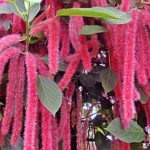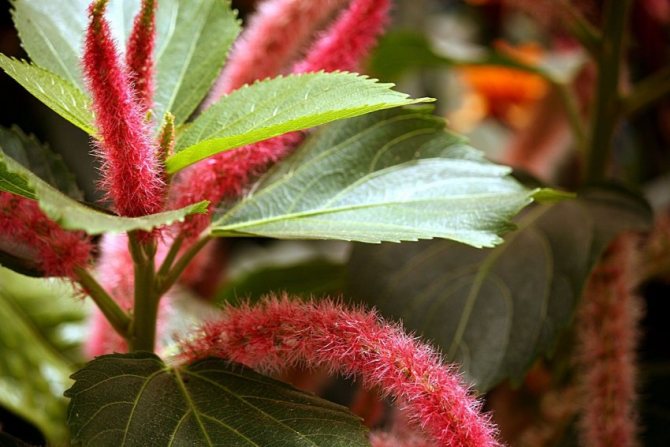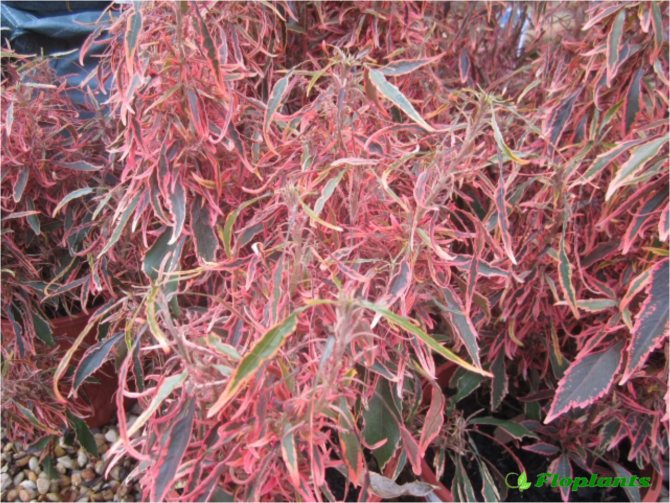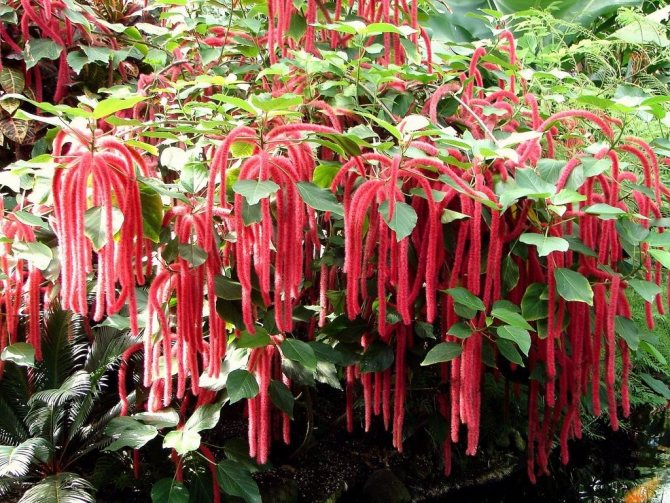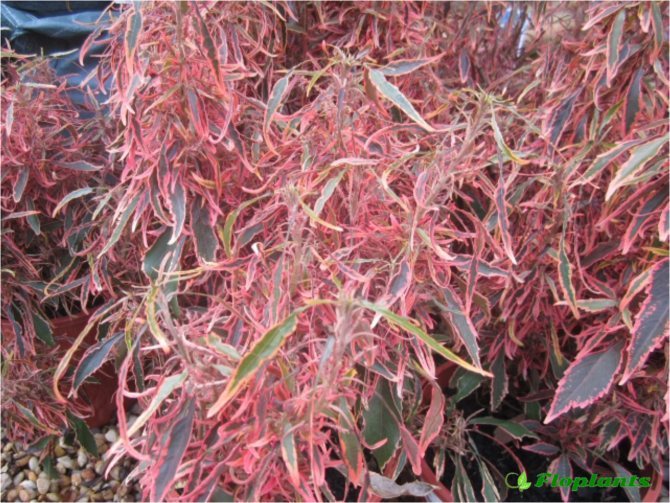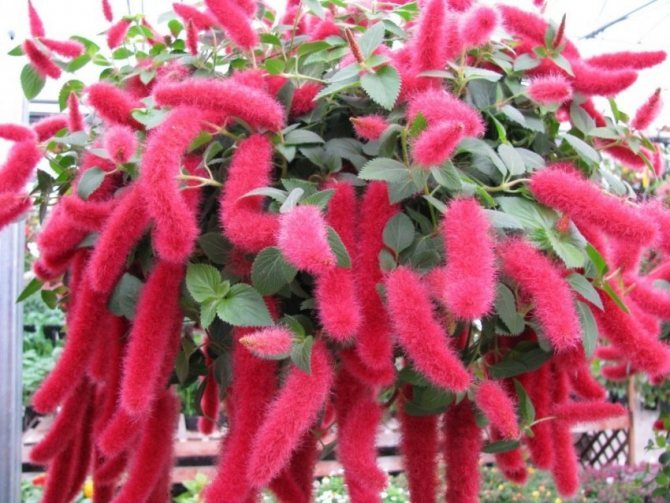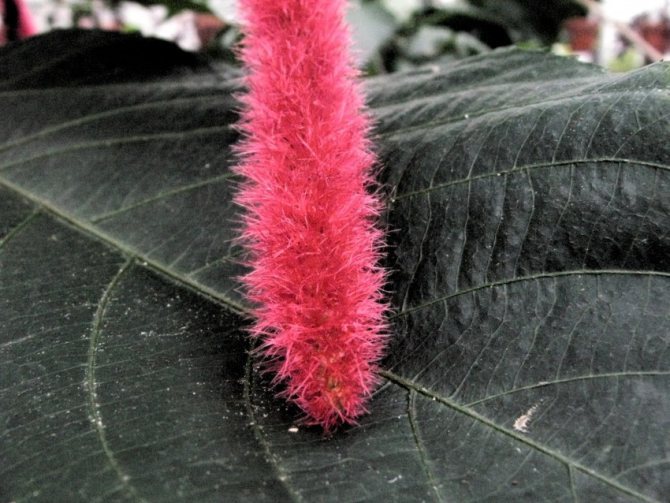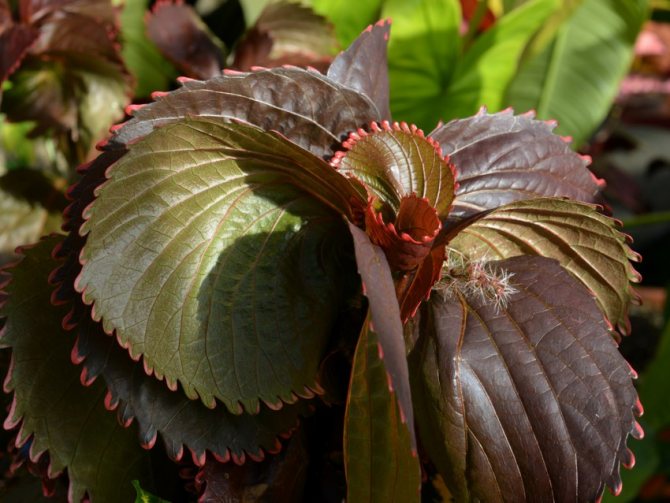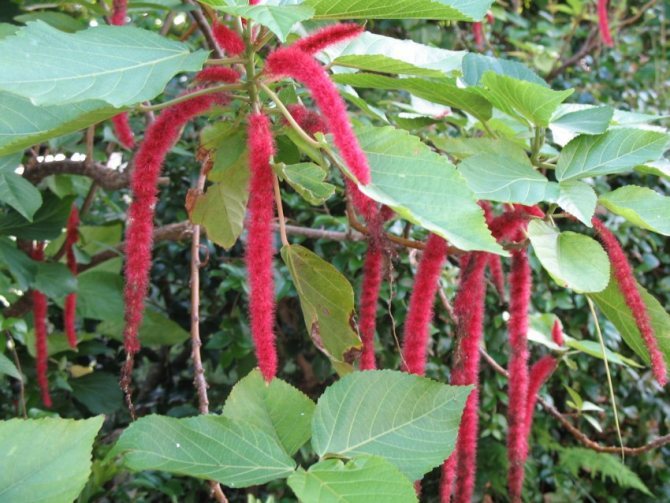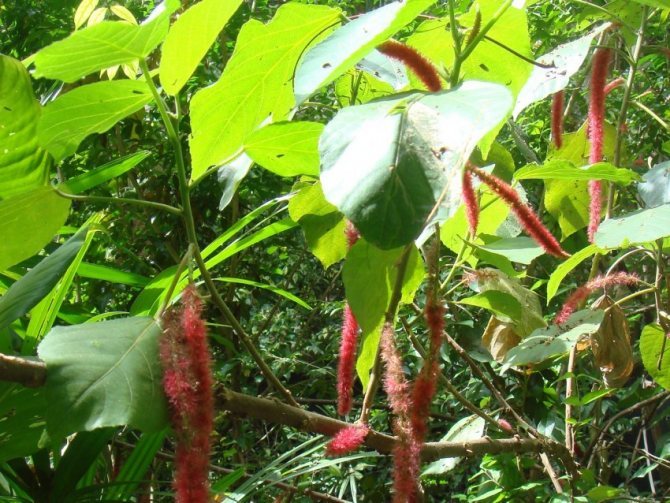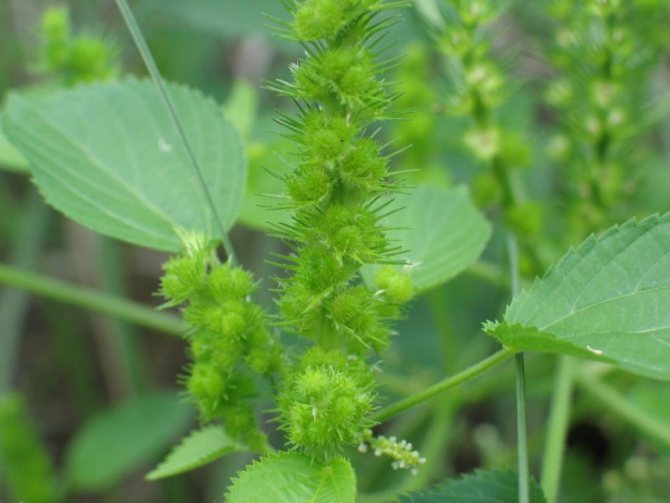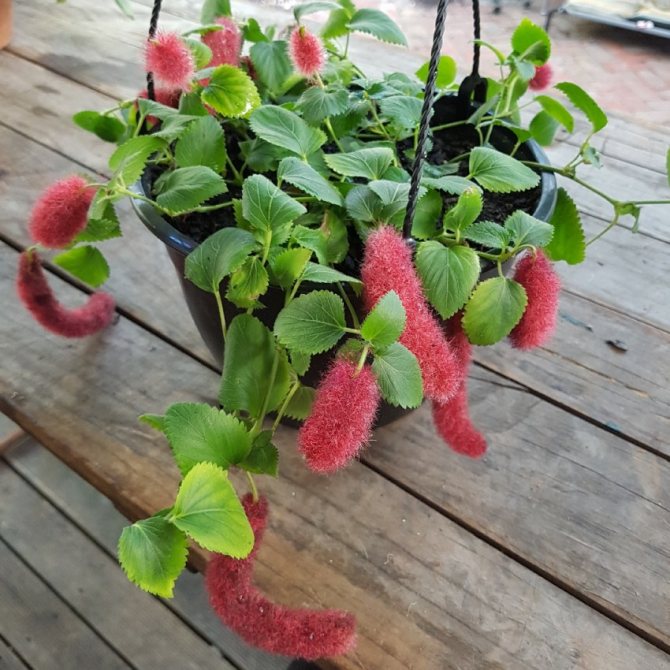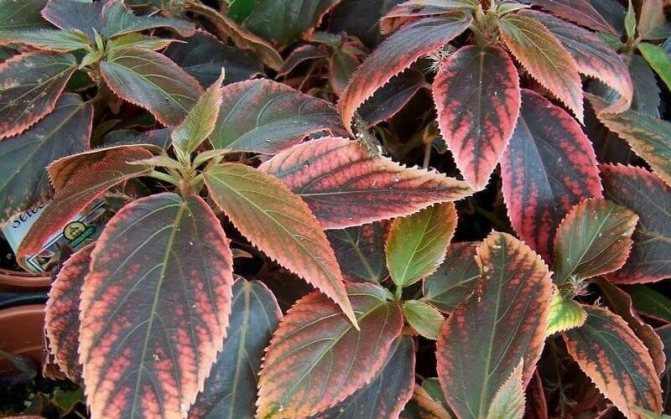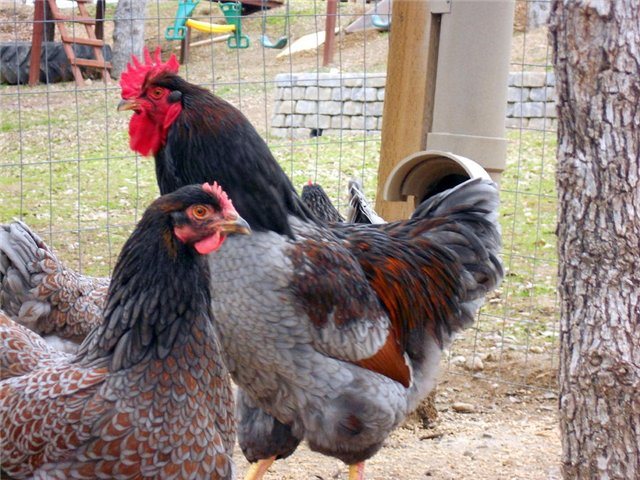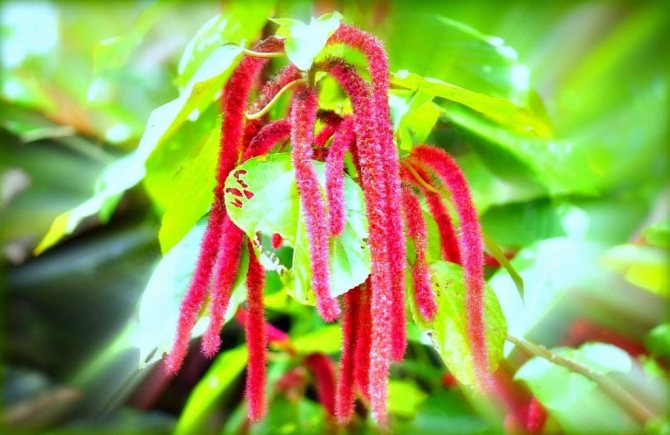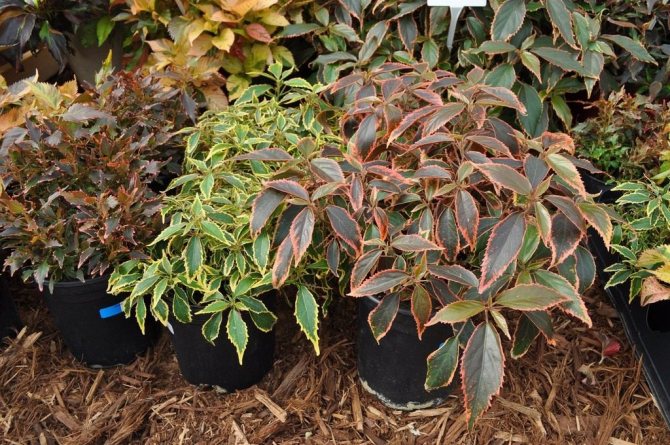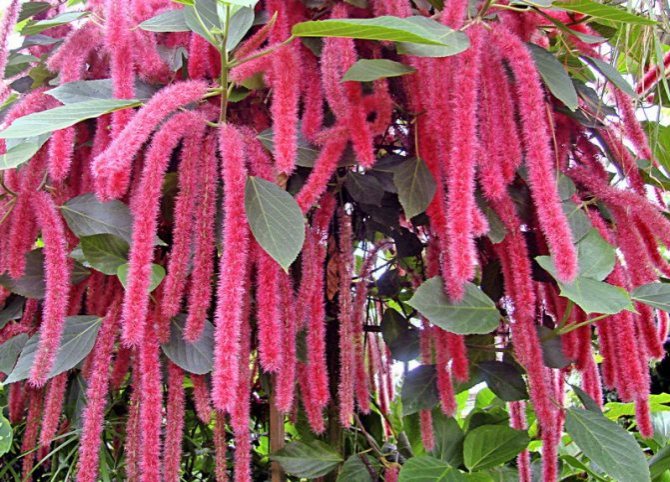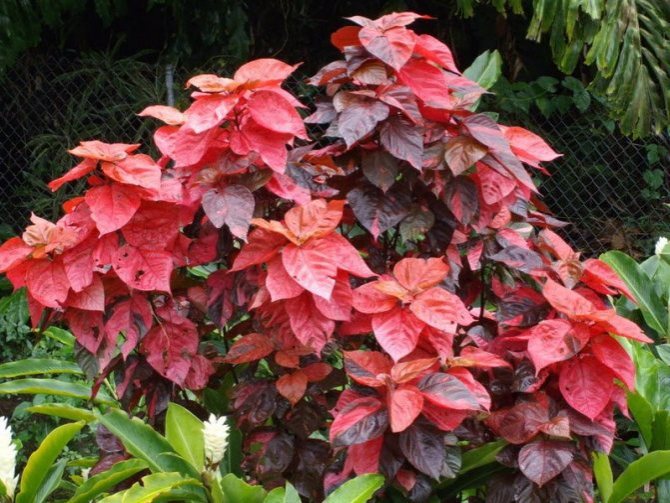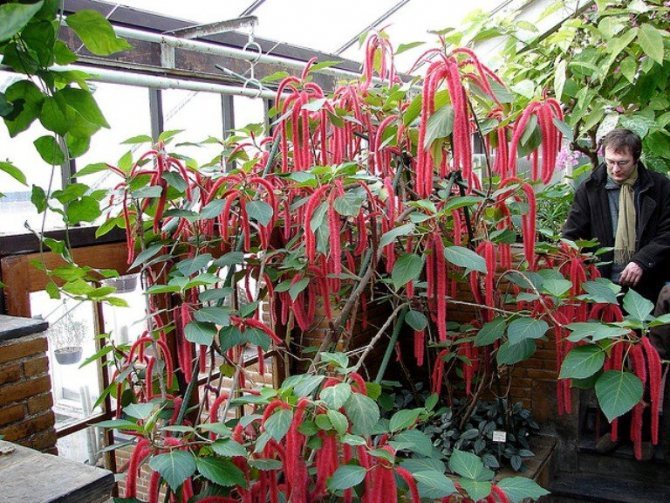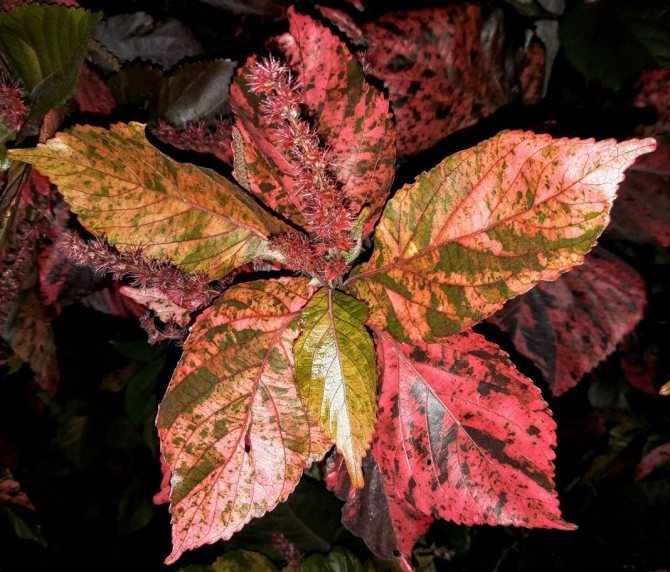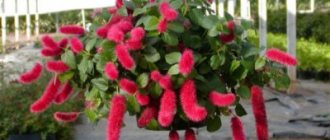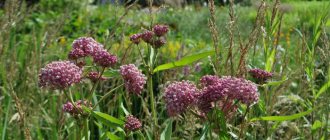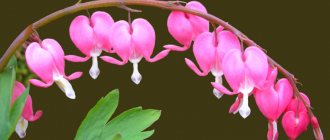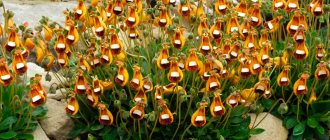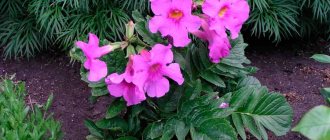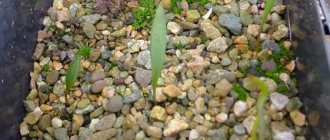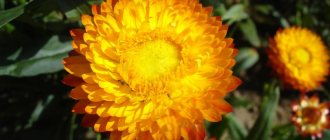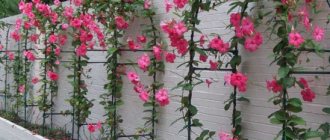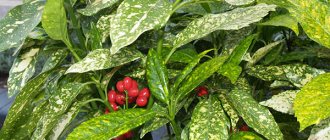The homeland of this unusual plant is the tropics of Australia and Southeast Asia. Akalifa is a lush green shrub with long unusual flowering. It can be grown as an ampelous culture, if you pinch the tips of the shoots - they branch. Caring for a tropican is simple, but it develops very quickly.
Home-grown Akalifa types:
- Akalifa Godsef (Acalypha godseffiana).
- Akalifa oak-leaved (Acalypha chamaedrifolia), she is the Haitian Akalifa (Acalypha hispaniolae).
- Akalifa Vilkeza (Acalypha wilkesiana).
- Akalifa Godsef varifolia (Acalypha godseffiana heterophylla).
- Akalifa bristly hairy (Acalypha hispida).
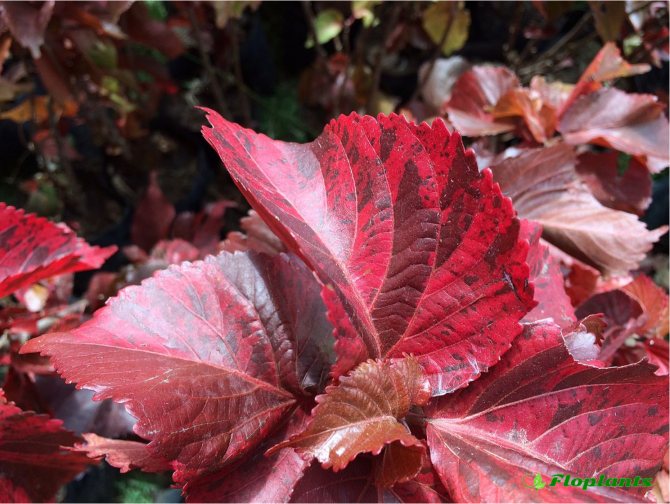
Acalypha wilkesiana.
Indoor flower: types with photos
There are many different types of Akalifa, and they are all beautiful in their own way. They differ in inflorescences, serrations on the leaves, color. The most famous of the species:
- Bristly haired;
- South;
- Wilkes;
- Vilkeza;
- Vigincy
Bristly
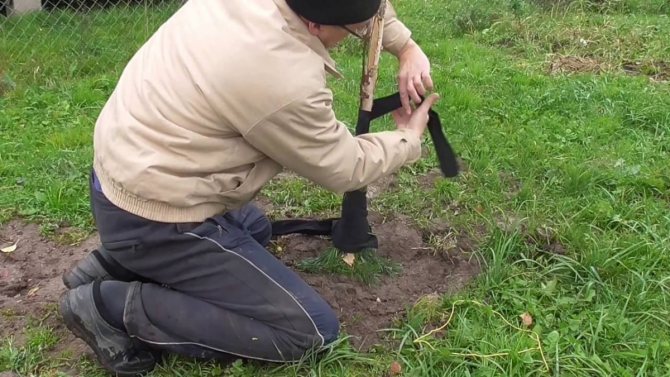

The plant is native to the countries of Africa, South America, New Guinea and Malaysia. In wild habitats, about 450 species have been found, the main group of species of which are monoecious akalifs. In Russia, bristly haired akalifa is an indoor flower. A perennial plant that grows as a shrub. The leaves are dull, with a serrated edge, like that of nettles, the branches are up to 3 meters high.
The leaves are pointed at the end, there are pronounced red streaks. Akalifa blooms with bright crimson-red earring inflorescences, similar to the tail of a fox and reaching a length of about 50 cm. Frosts and low temperatures are fatal for the plant. This species is grown in cold regions in indoor or greenhouse conditions. If the plant is not restricted in growth, it will form a bush up to a meter.
But even in case of limitation, akalifa will need a lot of space. With proper care, Akalifa can bloom for 9 months.
South
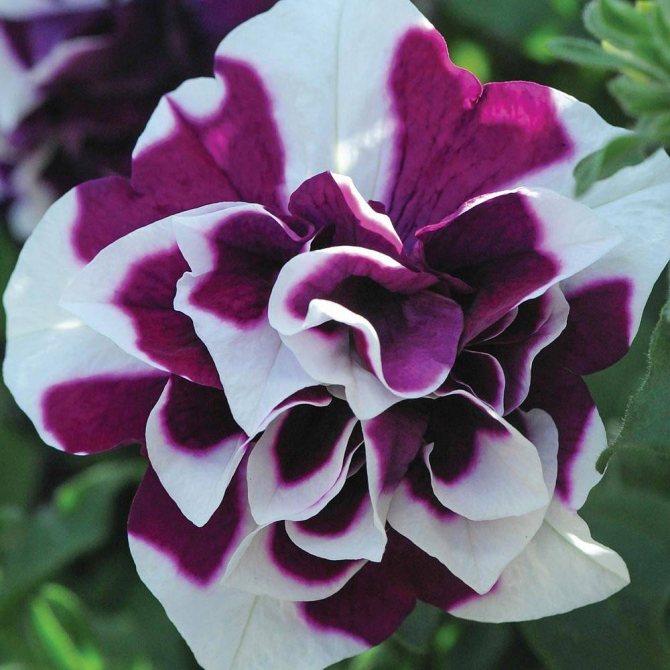

On the care of Akalifa:
Temperature: The optimum temperature for Akalifa in summer is 17-25 ºC, while in winter the temperature should not drop below 15 ºC. There should be no strong variation in temperature at night and during the day. Akalifa is a thermophilic plant, but it is not recommended to place the plant next to batteries or heaters in winter. In summer, the plant can be affected by the cold air currents of the air conditioner, so it should not be placed under or in critical proximity to air conditioners. The plant is afraid of drafts and hypothermia of the root system. In summer, it can be taken out onto a balcony or terrace, while protecting it from direct sunlight, wind and precipitation.
Lighting: Akalifa develops well in bright diffused lighting without direct sunlight and windows of the western and eastern directions are well suited for her.
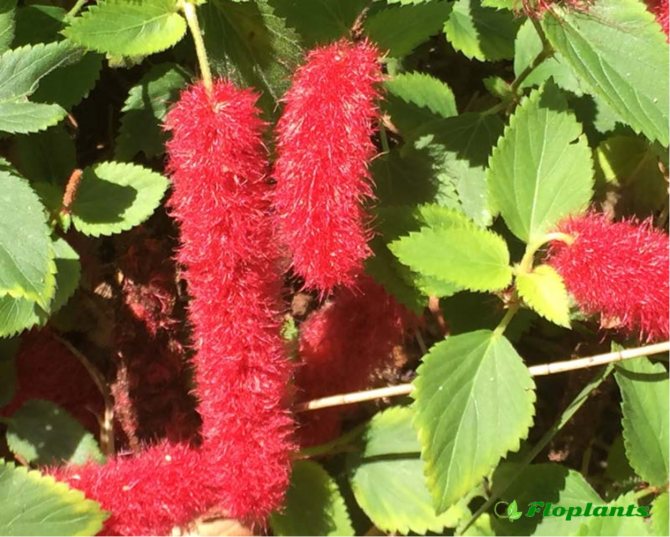

Acalypha chamaedrifolia.
Watering: Should be regular and abundant. Watering is necessary with warm soft settled water. The frequency of watering depends on the temperature of the content. In summer, the plant has active growth and an increased need for water, and watering must be carried out as the substrate dries up. In winter, watering is reduced, but it is not worth bringing the substrate to complete drying and watering the soil once every 2 weeks should dry out between waterings.After watering, the water from the pallet must be drained. Excess water in the soil can lead to root rot.
Air humidity: Akalifa is demanding on the humidity of the air and for her a daily procedure should be spraying, like a fog, leaves with soft, settled water in the morning and evening, especially if the plant is kept in a room with dry air. Regular spraying will preserve the decorative effect and improve the well-being of the plant. In order to increase the humidity, pallets with wet expanded clay can be used. In this case, the bottom of the pot should not touch the water. It is useful to spread wet sphagnum on the soil surface. It is necessary to clean the leaves from dust and periodically arrange a shower for the plant, but make sure that the drops after the shower do not remain on the foliage.
Crown formation: The plant responds well to shaping, which can be done by either pruning or pinching to shape. Young plants must be pinched annually, removing the buds from the upper shoots, and annual pruning is applied to old specimens. When pruning, it is necessary to cut off all the shoots, leaving hemp 25-30 cm high, for adaptation it is necessary to constantly spray it, you can put on a transparent plastic bag.
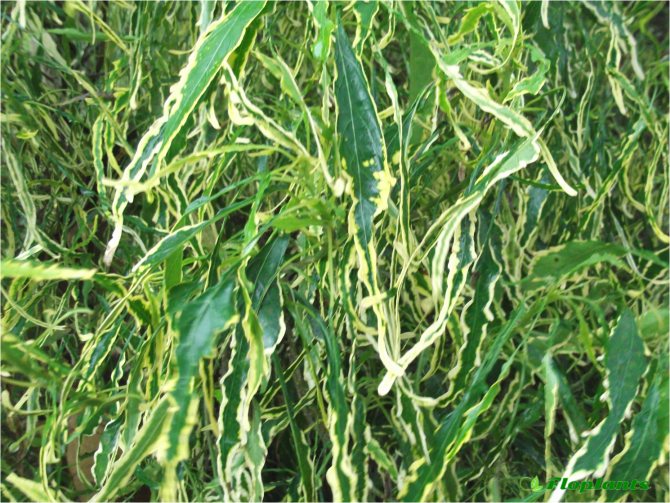

Acalypha godseffiana heterophylla.
Fertilizers: Fertilize once a month in spring and summer. For feeding, complex fertilizers are used for decorative deciduous plants.
The soil: For Akalifa, soil for decorative deciduous plants, a universal substrate, is suitable. Be sure to add charcoal, coconut soil and pine bark to the soil. A good wide drainage layer is needed at the bottom of the pot.
Transfer: A young specimen is transplanted once a year in order to accelerate the development of the plant, and adults only once every 2-3 years by the transshipment method. The pot should be deep and 1-2 cm larger than the previous one; Akalifa develops better in a cramped pot. After transplanting, the plant is not fertilized for a month. If the transplant is not carried out, it is recommended to replace the top layer by adding fresh substrate.
Pests of Akalifa. Damaged by spider mites, whiteflies, aphids, mealybugs and scabies.
Variety of species
Akalifa has many types. Here are the most famous and popular ones:
Akalifa Hispida
Alokazia - home care, description of Polly and Amazonian varieties
In the description of the akalifa hispid, it is said that its other name is akalifa bristly haired. It is a small indoor flower with long inflorescences (about 45 cm). Their color can be dark pink or red. Outwardly, they are very similar to birch catkins. The leaves are thin, dark green, covered with branched veins. The edges are slightly serrated. Long and lush flowering.
Akalifa south
This species does not stand out in any way. Akalifa southern is a common weed. Its stem is straight and branched, reaching a height of half a meter. Flowers of two types: staminate (below) and pistillate (above). Inflorescences are spikelets. Blooms from July to August. The fruits are formed in August-September and are formations with hard hairs. The color ranges from gray to light brown.
For your information! Such an annual plant is very tenacious, so herbicides should be used to destroy it.
Akalif Wilkes
This species is prized for its rounded leaves with a bronze tint and crimson spots. That is why it got its second name, copper sheet. Foxtail eventually turns into a tall bush, but there are also miniature specimens. Rare flowers also surprise with their red color, but they are still not as impressive as the catchy leaves.
Akalifa Viginsi
The homeland of the endangered species is the Galapagos Islands. Due to the vigorous activity of people, this species practically does not occur in nature.It has wide, elongated leaves with sharp tips. Inflorescences are bright red, hanging.
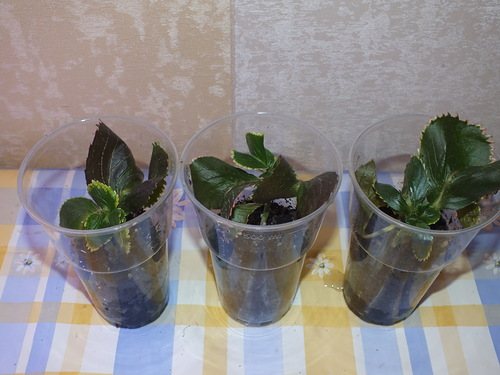

Propagation by cuttings
Akalifa can rightfully be considered a very diverse plant. Numerous representatives include both attractive flowers and weeds. However, among the large selection, you can definitely find what you want. This plant will be an ideal decoration for any room, whether it be an ordinary apartment, a cozy country house or an office study.
Reproduction of Akalifa:
Propagated mainly by cuttings, less often by seeds.
Cuttings for reproduction of Akalifa are mainly obtained by pruning a plant. Decorative flowering specimens take root in March, and deciduous ornamental specimens take root throughout the year. Rooted in soil at a temperature of 22-25 ° C under a greenhouse, where constant humidity is maintained, bottom heating is recommended. Rooting stimulants can be used. On average, rooting takes place within 1.5 months.
Seeds are sown in March-April, buried slightly by pressing down, covered with glass, cling film or a bag, using the bottom heating. When the first shoots appear, the greenhouse begins to be aired. When the seedlings reach a size of 3-5 cm, you can make a dive into different pots.
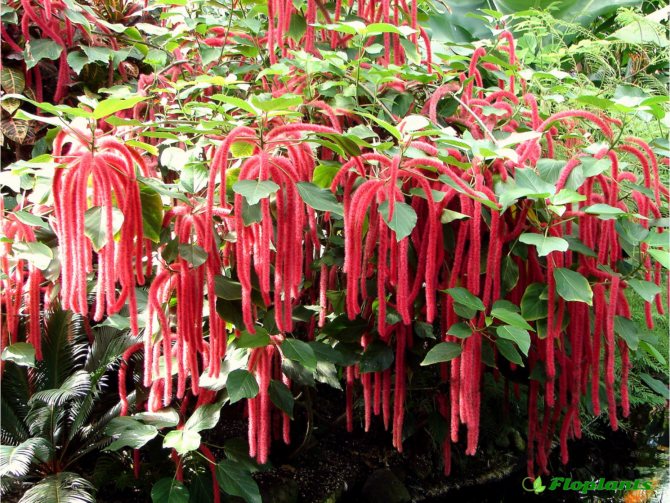

Acalypha hispida.
Diseases and pests
- If weeping brown spots appear on the leaves, then the cause of this is leaf spot disease.
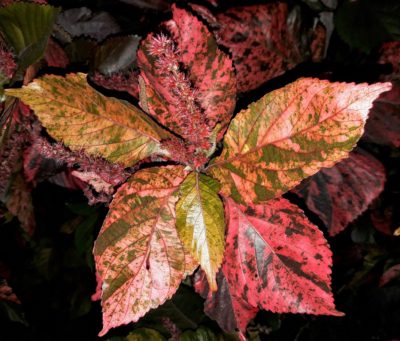

If the leaves wither, then the reason lies in the excessive moisture of the soil or its overdrying. It is important to adjust the watering. Another reason is an overly heavy substrate. It should be replaced.- When the leaves lose their color, become pale, this indicates a lack of lighting. if the akalifa has been in shade for a long time, then it must be gradually accustomed to more light. In winter, the plant needs fluorescent lighting.
- The tips of the leaves have become dry and brown - too low indoor humidity or insufficient watering.
- Dark spots have appeared - the cause is drafts and hypothermia.
Advice! The toxicity of the plant is important to consider if there are small children and pets in the house.
Among the pests for akalifa danger posed by: aphids, spider mites, whiteflies, mealybugs... They are treated by applying insecticides (spraying and watering), for example, Aktara.
Akalifa. Growing problems.
- Akalifa stretches out, leaves turn pale with a lack of lighting.
- Blanching foliage, stunted growth with a lack of fertilizers in the soil, an emphasis on nitrogen is required.
- Dry leaf tips become indoors with dry air or with insufficient watering.
- Yellowing and falling foliage occurs if the air in the room is too dry.
- Foliage indicates that the plant has undergone a fungal disease, treatment with a fungicidal preparation is necessary.
- Dark spot appears if the plant has been exposed to drafts or cold temperatures.
- Foliage withers with a lack or excess of watering.
- Foliage withers and falls if the room temperature is too low.
Views: 437
What is this plant and what does it look like?
Akalifa is a perennial flowering plant that has received the popular name "Fox Tail".
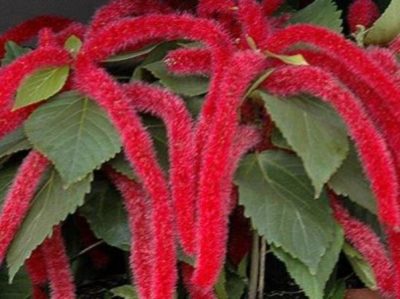

But
this name fully applies only to A. bristly haired (rough). Its oblong crimson inflorescences are somewhat similar to the fluffy tails of foxes. This variety is most popular for home cultivation.
Another popular type for home is Akalif Wilkeza or Wilkes. There are several varieties of them. The flowers of these plants are not very impressive, but the leaves are simply incredible. They delight the eye with orange or red strokes on a green-bronze background.
Akalifa is a representative of the famous Euphorbia family... Despite this, in natural conditions, the shrub can be found in hot tropical countries: in Australia, Polynesia, Latin America. The plant also likes the southeastern part of Asia.
How to propagate
Two methods are suitable for reproduction of akalifa: seed and cuttings.
Seeds
Akalifa seeds are sown in early spring. The soil mixture for sowing should be light: from leafy earth and sand in equal parts.
- Soak the seeds for a day in a growth stimulant (Epin or Zircon).
- Pour soil into a container (preferably a heated greenhouse), moisten it.
- Cover the seeds in the soil, sprinkling them only lightly.
- Cover the container or greenhouse with a transparent lid, turn on the heating.
- Place crops in a warm place, the soil should maintain a temperature of 20-22 degrees. Bottom heating accelerates seed germination.
- Moisten and ventilate crops.
- When two true leaves appear on the shoots, transplant the seedlings into separate pots with soil, as for an adult Akalif.
Cuttings
Cuttings of flowering varieties of Akalifa are carried out in early spring. Plants with variegated foliage all year round. You can root cuttings in sand, sand and peat mixture, or just in water.
- Slice about 10cm shoots that are already woody using a sharp knife or razor blade.
- Remove the bottom leaves. Next, place the cuttings in an opaque container with water (its level should not be higher than 5 cm) or place in wet sand (mixture with peat), poured into a greenhouse.
- Cover the cuttings in a container with a bag, in a greenhouse with a lid, put in a bright place without direct sun.
- Keep the temperature at least 22-25 degrees.
- Spray the cuttings and ventilate.
- After the roots appear, plant the cuttings of akalifa in a nutritious substrate (the compositions are in the chapter on transplantation). You can plant each stalk separately, or you can plant several in one pot to make the plant more luxuriant.
- Take care of the growing Akalifs like adults. But get used to intense lighting gradually.
- When the seedlings are one and a half months old, pinch off the top buds.
Akalifa is an amazing plant with wonderful fluffy inflorescences or incredibly beautifully colored foliage. Caring for him is not so easy, he is not for the lazy. And to those who are ready to spend a little time and effort, Akalifa will pay back in full. Bioenergetics claim that Akalifa successfully fights pessimism and discouragement. It accumulates the energy of joy. This plant is warming. In addition, the foliage of akalifa cleanses the environment of laziness and negative emotions. If you want to be easier to deal with troubles, to become easier on the rise, try to get an akalifa. Her fox tails will always cheer you up.
Signs and advice from readers
Since ancient times, Akalifa has been considered a plant of joy. It is recommended to place it in dwellings in which people are constantly depressed. Akalifa is able to accumulate positive energy in herself, and then at the right time to distribute it throughout the room. Also, this flower provides a person with inner harmony, develops sensitivity and logic, improves mutual understanding in the family.
Some people believe that Akalifa is able to take energy away from people living in the house. This phenomenon is argued by the feng shui theory of yin and yang. In fact, this phenomenon is due to the fact that the pollen of Fox Tail catkins is able to have a relaxing effect. This is what is considered to be a decline in strength and the "invasion" of negative energy.
Akalifa is an exotic plant that requires compliance with all care rules. Its flowers are unique in their kind. Florists do not disregard the fact that Foxtail accumulates positive energy, which many sometimes lack so much.
The healing properties of the Akalifa plant
When grown indoors, you should be careful with the plant, because if the stems or leaves are damaged, sap is released, which is poisonous.The plant also has benefits: it saturates the air in the room with useful substances with phytonicides, which destroy pathogenic bacteria.
The plant is recognized by official medicine and is used for the manufacture of drugs that treat bronchitis, pneumonia.
Landing in the ground, transplanting
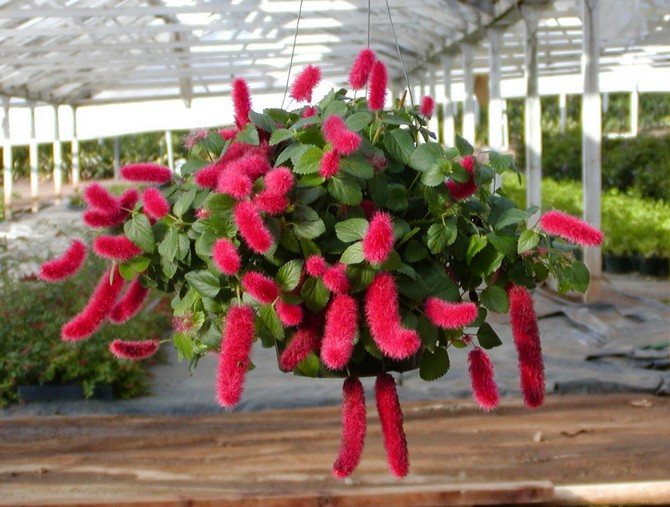

How to choose a substrate? The flower is unpretentious when it comes to soil. It should be lightweight, moisture and air permeable. It is optimal to use a mixture of humus, turf, leafy soil, sand and peat. They must be mixed in equal proportions.
Which growing container to choose? The pot should be small, but not too tight. The root system should fit comfortably in containers with a reserve for development until the next transplant.
How to transplant? Indoor plants akalifa grow and develop quite quickly. A transplant is recommended once a year. For this, medium-sized pots are selected. Mature plants are transplanted every three or four years. Aged specimens need to be transplanted once every few years, but the topsoil must be constantly updated.

